As Ontario pursues net-zero carbon emissions for energy production, plans have been laid for the construction of a highly-engineered radioactive waste disposal facility in Chalk River, Ontario. The facility is being proposed as a permanent and modern technological solution to a longstanding environmental challenge.
Today, Canadian Nuclear Laboratories (CNL) seeks the support of the industry and its supply chain to move forward on the proposed engineered containment mound – the Near Surface Disposal Facility (NSDF) — to advance the future of waste disposal in Canada.
Chalk River Laboratories was established in 1944, about 180 km from the City of Ottawa on the traditional and unceded territory of the Algonquin Nation. An adjacent community, the Town of Deep River, was developed to support the site and remains home to generations of employees.
As the centre for Nobel Prize-winning physics research, engineering technology and neutron science, Chalk River Laboratories’ legacies include the CANDU® reactor and the development of medical isotopes benefiting millions of people around the world through cancer diagnosis and treatment.
Today, Chalk River Laboratories continues to provide essential support to Canada’s carbon-reducing nuclear energy industry, contributes to new innovations in medical isotopes, and leads in the investigation and analysis of reactor components to ensure safety and compliance.
But the facility is changing to support those endeavours. The new site entrance building reflects only part of the Government of Canada’s C$1.2-billion investment to modernize the laboratories and revitalize the site. Honoured by the Algonquins of Ontario with the name Minwamon, meaning “clear path,” it’s one of three new buildings leveraging wood construction to reduce the carbon footprint of the campus, including the new LEED-certified Harriet Brooks building — a world-class material science laboratory named after the first Canadian female physicist, recognized for her contributions to atomic physics.
CNL is overseeing this revitalization as it manages the laboratories at Chalk River, along with several government-owned nuclear sites and facilities.
But decades of innovative research and development have resulted in waste by-products, as has demolition of more than 100 aging structures, typical of challenges facing the nuclear industry. While CNL has temporarily stored waste onsite using industry best practices, new Canadian regulations are outlining the parameters of a more permanent approach.
Employing leading-edge technology, CNL has proposed the NSDF as the solution for low-level radioactive waste at Chalk River Labs.
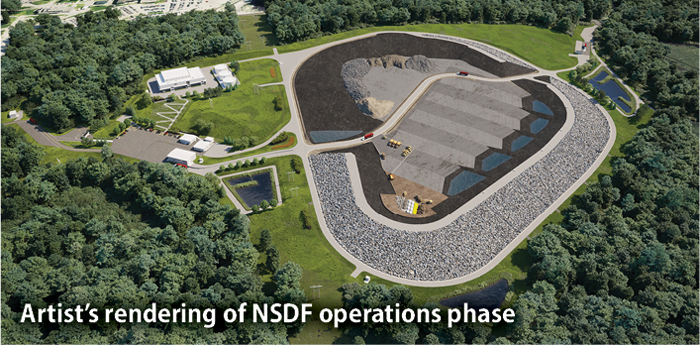
“Chalk River Laboratories is undergoing a transformative change that will propel CNL into the forefront of nuclear research in Canada and the world” says Kristan Schruder, CNL Deputy Vice President of Environmental Remediation Management. “The NSDF is key to this revitalization.”
The proposed C$365-million NSDF will include construction of a highly-engineered containment mound, site infrastructure and wastewater treatment facilities. A skilled workforce of 225 to 300 people will be needed to build it from the ground up. If approved by Canada’s nuclear regulator, the Canadian Nuclear Safety Commission, construction of the NSDF is anticipated to start in fall 2022.
CNL has successfully managed engineered containment designs through the construction and operation of waste management facilities in the Southern Ontario communities of Port Hope and Port Granby. In 2021, CNL completed the closure of the engineered aboveground mound in Port Granby, with 1.3 million tonnes of contaminated soil and industrial waste placed in the mound for safe, long-term storage.
The NSDF design will use natural and synthetic barriers to isolate waste from the environment. Testing on the synthetic geomembrane by Queen’s University concluded it will remain intact for more than a thousand years – by which time the radioactive material contained by it will have decayed to a safe level.
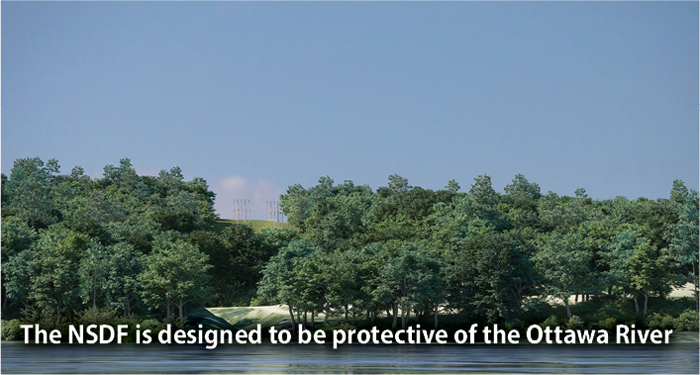
Deep River mayor Sue D’Eon favours construction of the NSDF to safeguard the environment and support economic development in the area.
“CNL is a collaborative neighbour and an excellent employer,” she says. “We view the proposal to build a facility for the safe disposal of low-level radioactive waste as a responsible action and a benefit to the entire community that demonstrates CNL’s careful stewardship of the environment.”
As the NSDF proposal nears the end of a five-year, federal environmental assessment, the Canadian Nuclear Safety Commission has scheduled public hearings starting in May of this year to consider CNL’s proposal. Anyone can submit a written intervention or letter of support to the Commission by April 11.
“With the support of our partners in business and industry, we can demonstrate to Canada and the world that the nuclear industry and its supply chain are well prepared to advance from temporary waste storage to permanent disposal.” says Schruder. “As a critical component in the revitalization of the Chalk River campus, this will enable long-term protection of the environment, continue a history of life-changing research and promote continued development of breakthroughs in nuclear science and technology.”




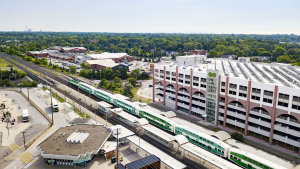


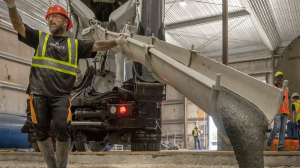
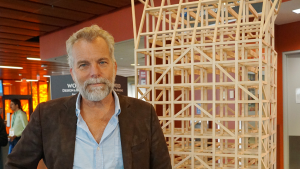


Recent Comments
comments for this post are closed